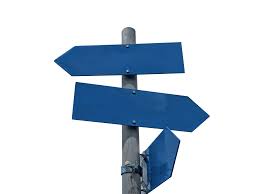The Conceptual Design
What is The Conceptual Design?
Why should I care about The Conceptual Design report?
What are the two alternatives presented in The Conceptual Design?
What are estimates for the two alternatives?
What are the potential additional costs not included in the estimates?
What about the long-term maintenance costs associated with each alternative?
overview
The WFCA Board commissioned a report to compare two options to address the pond issues. One option is to renew the current configuration of ponds by dredging and then installing new liners as needed. The other option was to provide information about “restoring the ponds to a stream channel” since the original landscape of Winslow Farms prior to development was a stream system that eventually fed into Clear Creek.
The Conceptual Design provides considerable valuable information with such technical information as flood water capacity. It also provides hypothetical cost estimates to compare both alternatives for ponds #3 through #7.
The entire report was entitled “Winslow Farms Community Association Pond Improvement Project Conceptual Design Report” and was submitted to the Board May, 2021 by Mr. Andrew Knust, P.E of Bledsoe Riggert Cooper and James/Land Surveying Civil Engineering GIS.

Why should I care about The Conceptual Design report?
Recently the WFCA Board announced that it would not be selecting an option to recommend to the WFCA membership. At this writing the Board has elected to present the two options listed in The Conceptual Design and ask the membership to select one of those options by voting at the next WFCA Annual General Meeting.
There will be those that will read the report and become familiar with the options. However, many will find the technicalities of the Conceptual Design to be somewhat daunting.
Most importantly, there are considerations and alternatives that are missing from the report. For those unfamiliar with the complexities of the issues, it will be easy to oversimply the choices without knowledge of the additional information.
This website and the supporting documents offer information to better help WFCA members understand the critical issues and accept the alternative presented in The Practical Proposal.

What are the two alternatives presented in The Conceptual Design?
Though conversations typically identify the two options to either renew (restore) the current ponds or to convert them to a stream channel, this is misleading. The report did NOT recommend a complete restoration to a stream channel, but rather limited the stream channel to what is the area designated as pond #3. This would empty into pond #4. Ponds #5-#7 would remain as ponds.
Pond #4 would also be redesigned. But where the stream channel in Pond #3 would easily drain, the area of pond #4 would retain some water. The report suggested that a rain garden could be installed in the pond #4 area to mitigate the negative impact from standing water.
The other option The Conceptual Design provided is for Pond Renewal: dredging the muck from the Ponds #3-#7, installing new liners and stabilizing the shoreline to mitigate erosion. It can be assumed that during the dredging process eroded shorelines would be restored. Landscaping ideas are also identified.

What are the estimates for the alternatives?
Mr. Knust provides itemized estimates for each of the two alternatives. However, during a question and answer session, he indicated that he provided the details and specifics could be selected to reconfigure alternatives. According to the report the Stream Channel option would cost $421,000 and the Pond Renewal option would cost $489,000.
However, a third option can be reconfigured. The Practical Proposal has entitled this third option as “Option B“. Mr. Knust agreed that it is a viable option. Using his figures for installation, at $400,000, Option B is the least expensive of the three.
But it is CRITICAL to note Mr. Knust indicated what could amount to “tens of thousands” of additional ancillary expenses have not been included in the stream channel totals. Refer to the next section to understand that these costs could add upwards of $154,000 to the Stream Channel Option, making a final total closer to $575,000.

What are the potential additional costs not included in the estimates?
The Practical Proposal team has spent considerable time contacting appropriate professionals to obtain general estimates to better understand the costs that could incur in preparation for the actual conversion of P3-4 to a stream channel. The results were disconcerting. Acknowledging that the information collected is not the equivalent to actual bids, the information reflects relevant approximations. They include the following:
- Permits
- Engineering plans to include sediment assessment, bathymetric studies, topographic studies.
- Legal services for property easements,
- Utility lines relocation
- A multi-year wildlife study
- Additional landscaping expenses
- professional consultant to oversee the project.
The initial information suggests that just these costs alone could approximate $154,000.

What about the long-term maintenance costs associated with each alternative?
The original basis for considering a stream channel was built upon the belief that long-term costs of maintaining a “stream channel” are less than the costs to maintain the current pond configuration. The idea was formed with the idea that all or most of the ponds would be converted to streams. There are NO recommendations to convert all or most of the ponds to a stream channel. The Conceptual Design only converts P3 and alters P4, P4 will have some pooled water and will need mitigation to prevent unsightly wetland issues.
The conversion is limited to one pond and the remaining ponds will continue to need attention, the possible savings from not needing to dredge what is now pond #3 will be negligible.
The successful installation of the stream channel in P3-4 is contingent upon effective landscaping and its conscientious maintenance, the cost of which have not been factored into the estimates.
